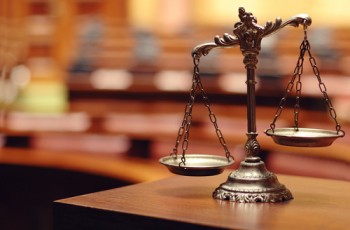Detroit Debate: Was Removal of High-End Graffiti a Criminal Act or Art Rescue?
The owner of a derelict commercial building in Detroit apparently isn’t complaining.
But the community is fiercely debating whether the removal of a high-end work of graffiti art—or vandalism, as some see the piece—was laudable art conservation or a second criminal act, reports the Detroit Free Press.
Depending on your point of view, both the demolition of a wall on private property at the crumbling Packard plant, in order to remove the portion containing the “Banksy” graffiti work, or the theft of the street art from its proper setting so it could be displayed at the 555 Nonprofit Gallery and Studios, was objectionable.
The debate at the cutting edge of art law is perhaps unique to Detroit, since acknowledged destruction of commercial real estate in other cities with a more vibrant economy could bring legal consequences:
“What does it mean to move a wall? And beyond legality, who does the wall really belong to, and now does the art belong to the gallery?” muses Luis Croquer, director of the Museum of Contemporary Art Detroit, to the newspaper. “To everybody? To nobody? We’re operating in this space where there’s this lawlessness that opens up possibilities that would be much harder to encounter in other cities.”
A Metro Times article provides additional details.
Related earlier coverage:
ABAJournal.com: “Graffiti Vigilante Cited After Painting Over Mural”
ABAJournal.com: “Alleged College Grad Graffiti Tagger in YouTube Videos Could Get 14 Years”
ABAJournal.com: “Pricey Paint Job: Record $1.1M to Settle Public Art Destruction Case”



